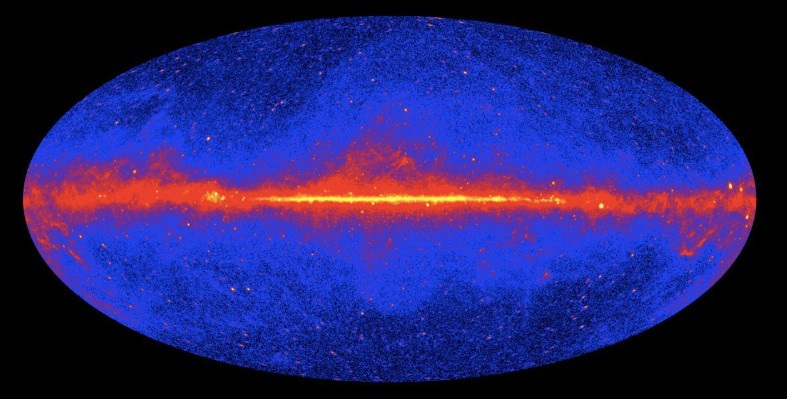Milky Way Galaxy’s Gamma Ray Glow Could Unlock the Secrets of Dark Matter, Scientists Say
A strange, glowing riddle falsehoods at the heart of our world, and scientists believe it could be the long-awaited indication of the macrocosm’s most fugitive substance, dark matter.
Experimenters at Johns Hopkins University have been studying a verbose gamma shaft gleam coming from the centre of the Milky Way Galaxy.
For years, astronomers have argued whether this radiant haze is caused by dark matter particles colliding or by the frantic spin of ageing neutron stars.
The findings, published in Physical Review Letters, present both possibilities as scientifically feasible.
Co-author Professor Joseph Silk, a leading astrophysicist, explained the implicit significance of the discovery.
He said, “Gamma rays, specifically the excess light we’re observing at the centre of our galaxy, could be our first clue.”
That indication could prove groundbreaking. For decades, dark matter, the unnoticeable mass allowed to make up most of the macrocosm, has remained one of ultramodern wisdom’s biggest mystifications.
This new study, still, may eventually bring experimenters closer to working it. The platoon used supercomputers to produce detailed charts of possible dark matter attention within the Milky Way.
By bluffing the world’s billion-time elaboration, they traced how dark matter might have shaped its conformation.
Their models were also compared with gamma-ray data collected by NASA’s Fermi Gamma-ray Space Telescope.
: Eerie image shows elusive substance that makes up 25% of the universe─ Mysterious dark matter is seen for the first time ─ and baffles scientists pic.twitter.com/gQo0lmCRuZ
— All day Astronomy (@forallcurious) October 16, 2025
The results? A strong alignment. The simulated signals produced by colliding dark matter particles looked strikingly similar to those actually observed.
Of course, there’s still a twist. Another possible explanation for the Milky Way galaxy’s gamma ray glow involves millisecond pulsars, rapidly rotating neutron stars that can emit intense radiation.
However, the pulsar theory has its flaws. For it to hold up, there would need to be far further of these pulsars at the galactic centre than astronomers have set up so far. That imbalance makes the dark matter script more satisfying, at least for now.
To resolve the debate, scientists are eagerly awaiting data from the Cherenkov Telescope Array, a slice- edge overlook now under construction.
This high-resolution telescope will allow experimenters to capture clearer, sharper gamma shaft measures than ever ahead.
By analysing the energy situations of the gamma shafts, scientists hope to determine their true source, whether they’re born from pulsars or dark matter relations.
Fresh studies on dwarf worlds ringing the Milky Way are also planned to identify implicit dark matter hotspots.
The hunt continues. Each new discovery pulls researchers a little closer to uncovering the universe’s unseen framework.
As Professor Silk and his team suggest, this mysterious galactic glow could soon offer the first tangible evidence of dark matter — or open up an entirely new cosmic mystery.
Either way, the Milky Way’s gamma ray glow has become one of the brightest beacons in the ongoing search for answers hidden in the dark.






